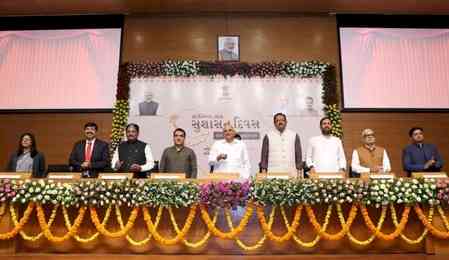Electronics Industry to Gain Momentum as GST Reforms Simplify Taxation and Enhance Affordability, Say Tech Leaders

Rajeev Singh, Managing Director, BenQ India
"The recent GST reform is a decisive move toward simplifying and streamlining the tax structure for the electronics industry. By consolidating the tax slabs into a clear and predictable two-tier system, it reduces compliance complexities and fosters a more transparent business environment. This reform is set to benefit manufacturers, retailers, and consumers by lowering costs across the supply chain, encouraging competitive pricing, and stimulating demand for a wide range of electronic goods. Moreover, it supports the government's vision to enhance local manufacturing and innovation, providing a strong foundation for sustainable growth in the sector. Notably, the reduction of GST rates on products such as monitors and projectors further eases costs for businesses and educational institutions, promoting wider adoption of digital technology solutions across India."
Ravi Agarwal, Co-Founder and Managing Director, Cellecor
"We welcome the recent GST reforms as a decisive step towards creating a more level playing field and fostering growth within the consumer electronics and appliances industry. The rationalization of GST rates to a uniform 18% on products such as TVs, monitors, air conditioners, and dishwashers is a particularly positive move. It not only enhances affordability for Indian households but also simplifies compliance and operational efficiency for manufacturers and brands like Cellecor.
Equally significant is the alignment of GST on lithium-ion batteries at 18%. This will have a direct impact on the ecosystem of wireless, portable, and smart devices by reducing input costs across the value chain. For a fast-growing Indian brand like Cellecor, this encourages us to accelerate innovation in smart gadgets and energy-efficient products while keeping them accessible to a wider base of consumers.
Overall, these reforms are a timely enabler for greater consumer confidence and demand creation. They strengthen the foundation for digital adoption across urban and rural markets alike, supporting our long-term vision of bringing quality, affordable technology to every Indian family."
Aditya Khemka, Managing Director, CP PLUS
“The recent GST revisions are a progressive step for India’s technology ecosystem. Rationalizing taxes on consumer electronics, critical components like silicon wafers, and logistics will help reduce the cost of hardware that powers modern surveillance infrastructure, making advanced security solutions more accessible to businesses, housing societies, and urban centers. While adjustments may be needed on account of higher GST on outsourced job work, the overall direction supports affordability, faster adoption, and strengthens the government’s vision of Atmanirbhar Bharat by boosting local manufacturing and value creation. For the surveillance industry, this creates an important opportunity to accelerate organized deployment and deliver safer, smarter communities across the country.”
Pankaj Rana, Chief Executive Officer, Hisense India
“The government’s recent GST reforms on televisions and air conditioners come at a critical juncture. By reducing price barriers, these reforms enable a larger and more diverse consumer base, especially in emerging markets and Tier-2 and Tier-3 cities, to access high-quality, energy-efficient products. At Hisense India, our focus has always been to deliver global innovation at prices that resonate with Indian households, and this move makes our advanced range of our TVs and home appliances even more accessible ahead of the festive season, when families are looking to upgrade their homes. Ultimately, this reform not only improves affordability but also elevates the quality of life for millions of Indian households."
Ravi Kunwar, VP and CEO, HMD India & APAC
“The latest GST reforms mark a constructive development for diverse industries across India, with the Council’s move to consolidate rates and streamline registration and refund processes driving substantial change in business operations nationwide. By simplifying the tax structure into clear 5% and 18% slabs, these reforms are set to promote consumer savings and create more disposable income, delivering timely relief and positive sentiment ahead of the festive season.
These measures reflect India’s continued pursuit of regulatory ease, and their true value will be seen in how effectively benefits extend to both consumers and industry progress—particularly in manufacturing and technology. For HMD and the broader telecom sector, we expect improved operational efficiency, greater cost predictability, and sustainable growth, reinforcing our commitment to supporting India's digital transformation and the vision of Viksit Bharat@2047. Going forward, clarity in implementation will be key to enabling all stakeholders to fully leverage these reforms.”


 City Air News
City Air News 










